Norwich Cathedral
|
A magnificent Anglican Cathedral serving the fine citizens of Norwich for over 900 years |
|
An Introduction to Norwich Cathedral
|
Norwich Anglican Cathedral boasts the second tallest spire and the second largest medieval cloisters in England. It also has the largest collection of decorative roof bosses in England and is the only church in the Northern Hemisphere to have its Saxon Bishop's Throne in its original position. Norwich Cathedral continues to hold traditional services to this day – it remains a place of worship, where one can seek solace and comfort. It is attended by the pupils of Norwich School, who use the cathedral for their daily assembly. It is also the venue for many lectures, concerts and exhibitions. |
Norwich Cathedral Pictures
|
Norwich Anglican Cathedral was the vision of the 1st Bishop of Norwich, Herbert de Losinga in 1096 and took neary 200 years to complete. The building itself is built in the shape of a cross and constructed out of light, smooth, Caen stone and grey, fossil filled stone from Northamptonshire. |
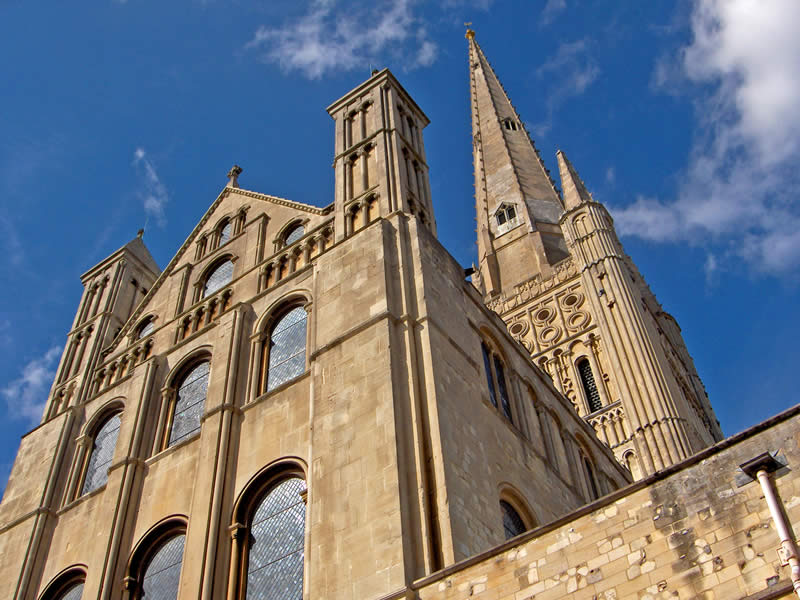
Norwich Cathedral |
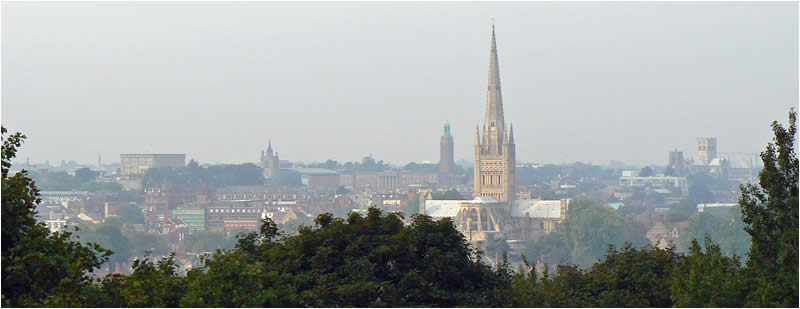 Norwich Cathedral dominating the city centre skyline Norwich Cathedral dominating the city centre skyline |
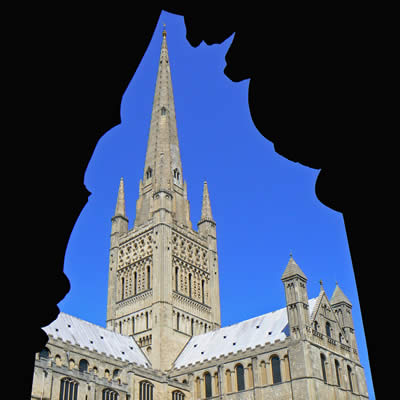
Norwich Cathedral as seen from the Cloisters |
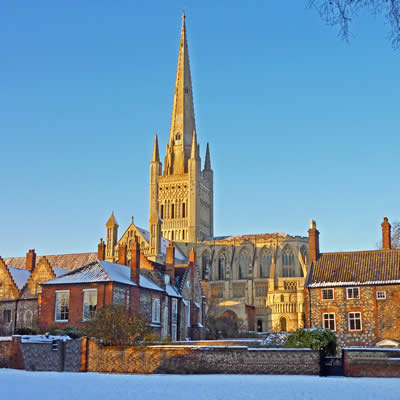
Norwich Cathedral glowing in the winter sunshine |
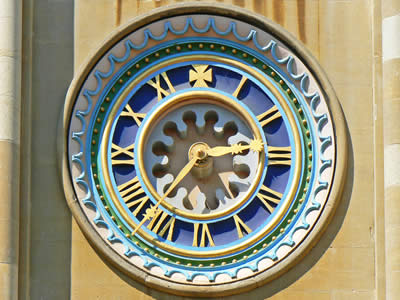
Norwich Cathedral Clock |
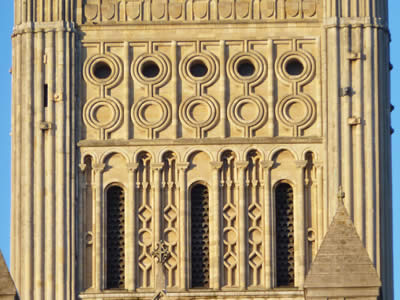
Close up of the cathedral stone |
In 1272 there was a riot by the citizens of Norwich, who had grown increasingly hostile towards the cathedral, irritated by its constant legal and fiscal pressures. Damage was done to the monastery and cathedral cloisters and fires ravaged the building. It has been described as one of the most violent attacks on a religious house to occur in medieval England. This act of violence was not well received and the citizens were forced to rebuild that which they had destroyed! |
Two magnificent gateways lead to Norwich Cathedral from Tombland. Erpingham Gate (c1420) was built by Sir Thomas Erpingham, who led the English archers at the Battle of Agincourt. The second is Ethelbert Gate (c1316) and built by the citizens as a penance after their riot had burnt down the original wooden gate. |
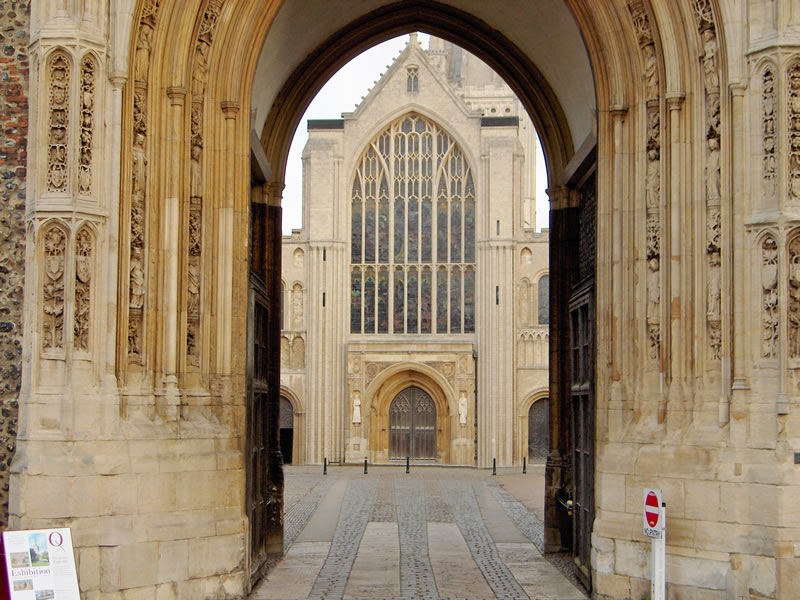
Norwich Cathedral a seen through Erpingham Gate |
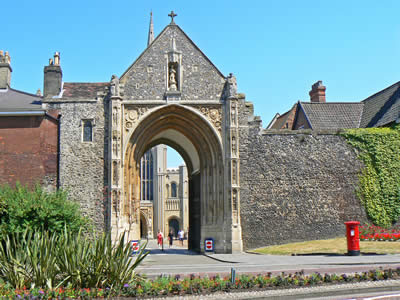
Erpingham Gate |
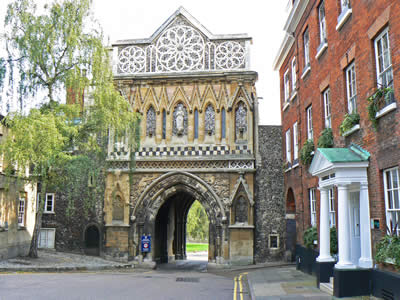
Ethelbert Gate |
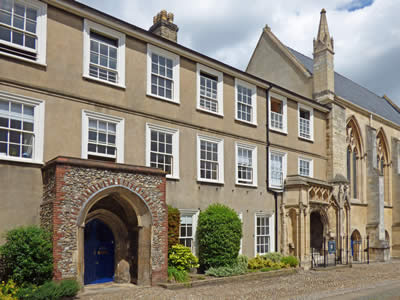
The Norwich School |
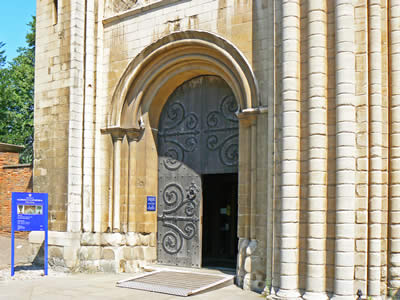
The entrance door to the Cathedral |
Inside, the Cathedral is simply magnificent and if you have never explored this wonderful building, you should make time during your visit to Norwich. There is so much to see including detailed stonework, beautiful stained glass, carved wood and all this set in a wonderful atmosphere of tranquility and peace. Make sure you get to see the painted roof bosses, Thomas Gooding's unique skeleton memorial, Bishop Goldwell's tomb, the Treasury and the Presbytery (including the Bishop's Throne). |
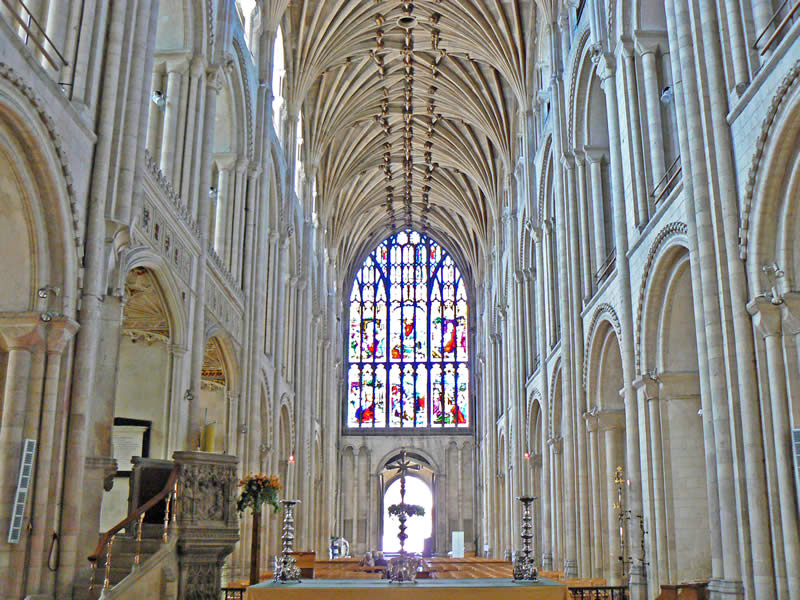
Inside the Nave of Norwich Cathedral |
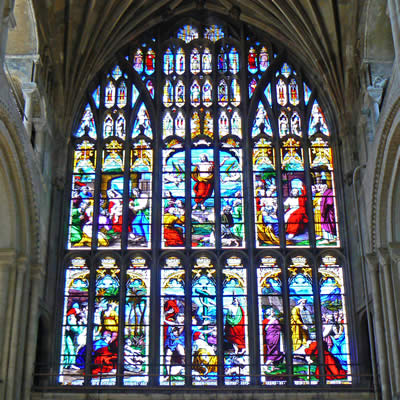
The Great Window |
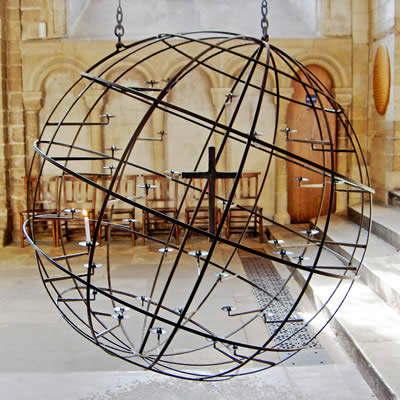
Spherical Candle Holder |
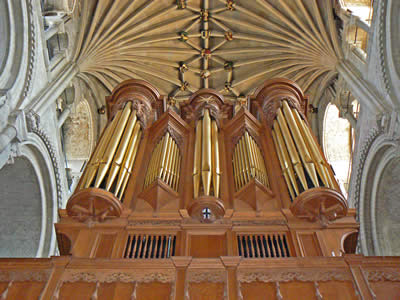
Norwich Cathedral Organ |
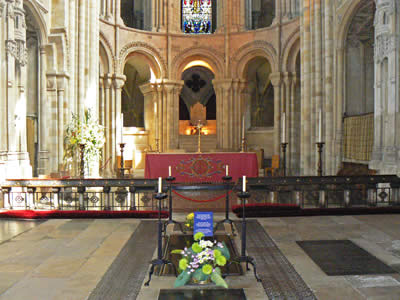
Norwich Cathedral Presbytery |
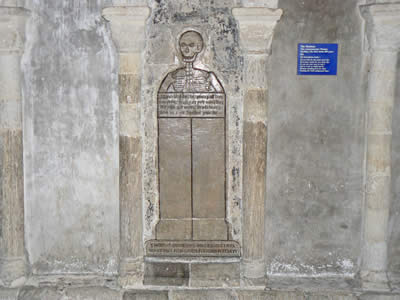
Thomas Gooding Skeleton |
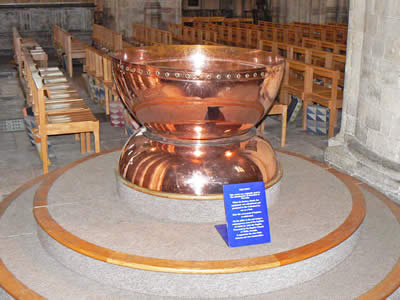
The Copper Font |
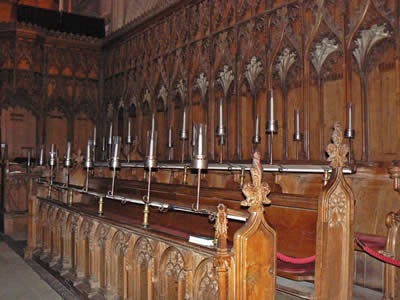
Choir Stalls |
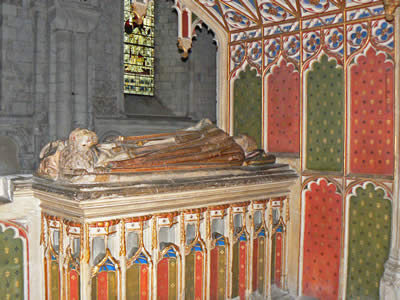
Bishop Goldwell's Tomb |
The Cloisters at Norwich Cathedral were built between 1297 and 1318. At 180 feet square, Norwich Cloisters come second only to Salisbury in size. The Monastery itself lay to the south of the Cathedral. The Monks spent most of their working lives here; there are alcoves where books would have been kept and also the original 'lavatorium' the washing area at the entrance to the Refectory. At that time washing was an important part of the Monastic ritual. Originally the Lavatorium consisted of two stories, with the Monks living in dormitories above. Around the Cloisters you can see more roof bosses at closer range; 100 of them alone depict the complete Book of Revelation. |
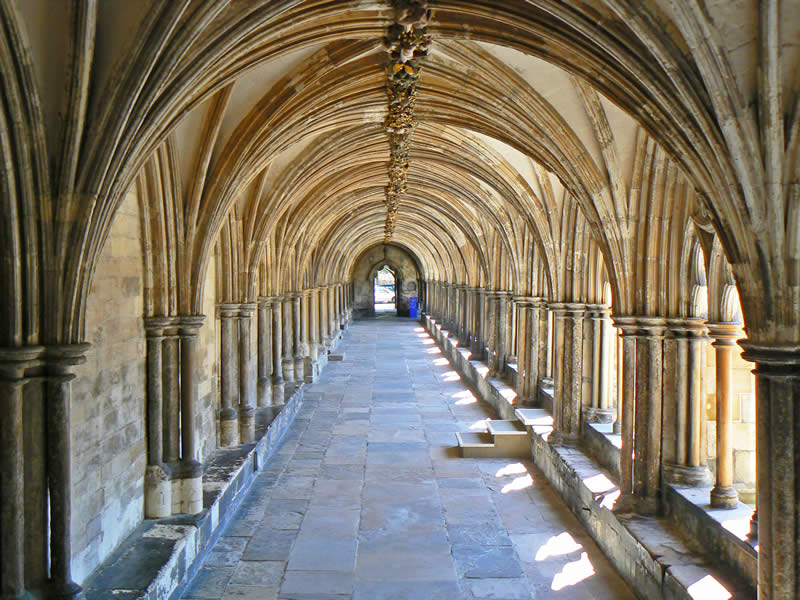
Norwich Cathedral Cloisters |
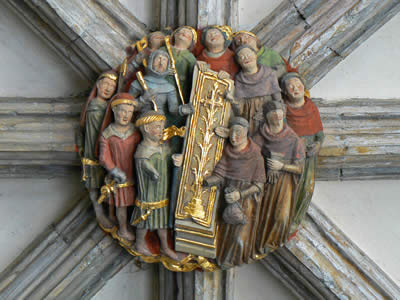
Cloister Roof Boss |
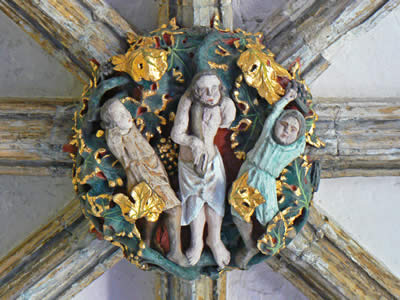
Cloister Roof Boss |
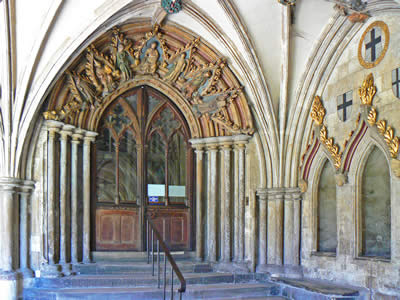
The South Door leading to the Cloisters |
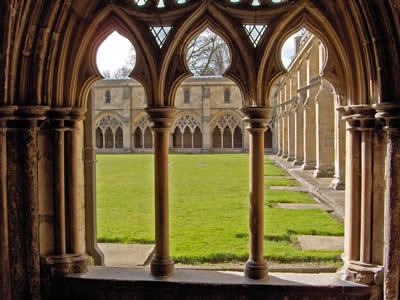
Norwich Cathedral Cloisters |
Norwich Cathedral Close is one of the largest in England and is a very tranquil place. It contains the Prior’s Hall and the Bishop’s Palace and many of the buildings form part of King Edward VI School, which is also known as Norwich School. Houses in the Lower Close are mainly residential, while those in the Upper Close serve as offices. There are various statues, including Nelson and Wellington, plus the grave of WW1 nurse Edith Cavell. |
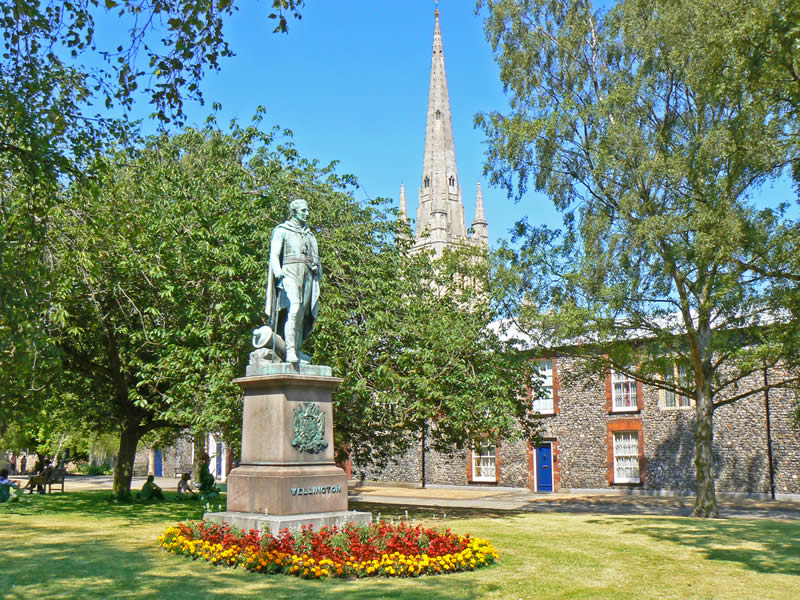
The statue of Wellington outside Norwich Cathedral |
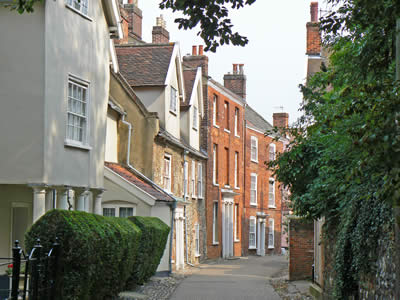
Hooks Walk in the Cathedral Close |
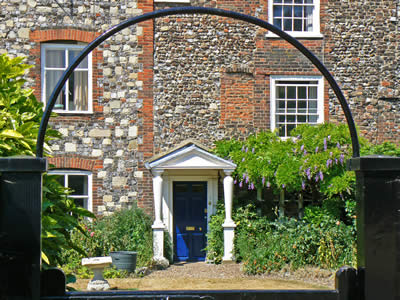
Property in the Cathedral Close |
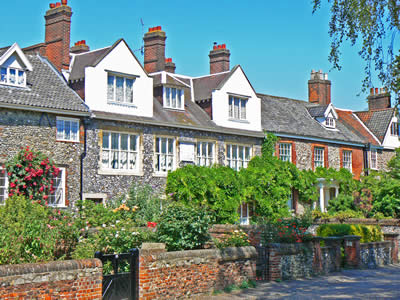
Norwich Cathedral Close |
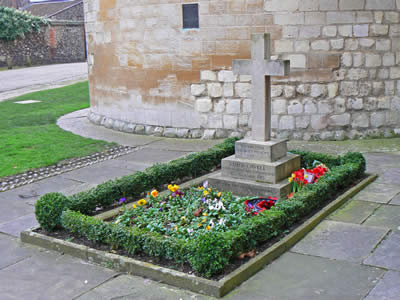
The grave of Edith Cavell |
|
|

